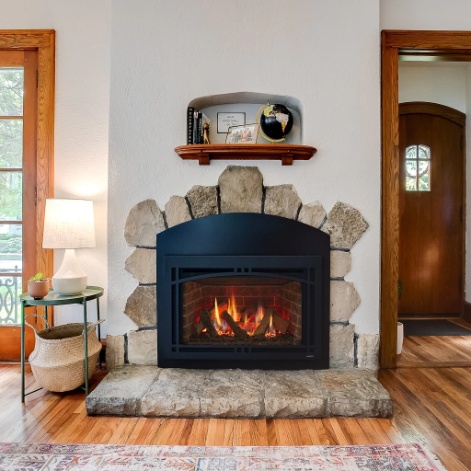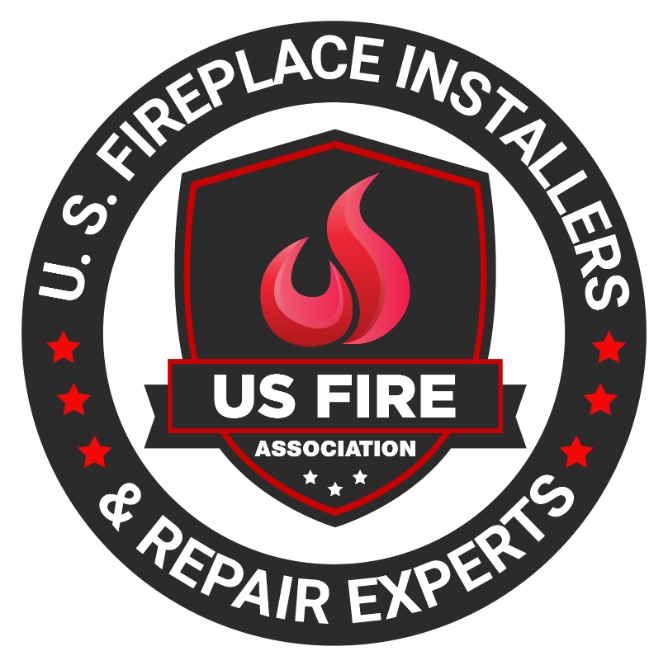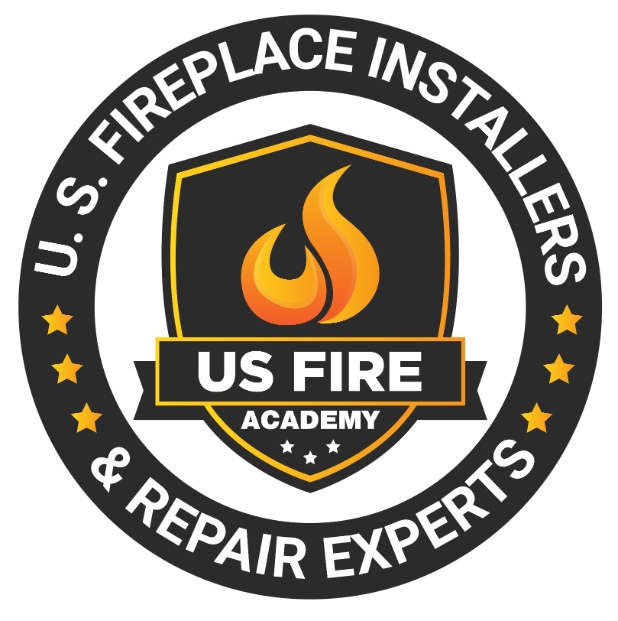Table of Contents
When it comes to heating options for your home, two popular choices are furnaces and fireplaces. Both serve the purpose of providing warmth and comfort during the colder months, but they differ in terms of functionality, pros, and cons. Understanding the differences between a furnace and a fireplace can help you make an informed decision on the best heating solution for your home.
A furnace is a heating system that uses forced-air technology to distribute warm air throughout your home. It operates by heating air and then circulating it through ducts and vents to different rooms. A study conducted by the U.S. Department of Energy found that modern furnaces offer high energy efficiency and can effectively heat large spaces. However, they require proper installation, regular maintenance, and are usually powered by electricity, gas, or oil.
On the other hand, a fireplace is a traditional heating option that uses open flames to generate heat. It typically features a hearth and chimney, creating a cozy and visually appealing ambiance. Fireplaces can be fueled by wood, gas, or electricity. They have a lower heating efficiency compared to furnaces, but they are valued for their aesthetic appeal and the natural warmth and ambiance they provide to a room.
In the comparison between furnaces and fireplaces, several factors need to be considered, such as heating efficiency, heating capacity, installation, maintenance, energy source, and cost. Your heating needs, lifestyle preferences, and budget will play a significant role in choosing between the two options.
By understanding the inner workings, pros, and cons of furnaces and fireplaces, you can make an informed decision to ensure optimal heating and comfort in your home during the colder months.
What Is a Furnace?
A furnace is a heating system commonly used in residential and commercial buildings to generate and distribute heat throughout the space. It is a central heating unit that works by burning fuel or using electricity to create heat, which is then circulated through ductwork or pipes to various rooms.
Key characteristics of a furnace:
- Heat Generation: Furnaces generate heat by burning fuel such as natural gas, propane, oil, or wood pellets. Alternatively, electric furnaces use heating elements to produce heat.
- Heat Distribution: The heat produced by a furnace is distributed throughout the building using ductwork, vents, or pipes. It may be forced-air, where a blower fan pushes heated air through ducts, or hydronic, where hot water or steam is circulated through pipes and radiators.
- Thermostat Control: Furnaces are typically controlled by a thermostat, allowing users to adjust the desired temperature. Once the temperature falls below the set point, the furnace kicks on to generate heat until the desired temperature is reached.
- Efficiency: Furnaces come in various efficiency ratings, indicated by Annual Fuel Utilization Efficiency (AFUE) for fuel-burning furnaces or Seasonal Energy Efficiency Ratio (SEER) for electric furnaces. Higher efficiency furnaces convert a larger percentage of fuel or electricity into usable heat.
- Ventilation: Fuel-burning furnaces require proper ventilation to release combustion byproducts like carbon monoxide safely. They are typically vented through a chimney, flue pipe, or direct vent system.
- Types of Furnaces: There are different types of furnaces, including gas furnaces, oil furnaces, electric furnaces, and wood pellet furnaces. Each type has its own advantages, fuel requirements, and installation considerations.
Furnaces are widely used for their ability to provide consistent and reliable heating throughout a building. They are commonly found in areas with colder climates and are often integrated into HVAC (Heating, Ventilation, and Air Conditioning) systems.
How Does a Furnace Work?
A furnace works by using a heating system to warm the air and distribute it throughout a building or home. The process starts with the thermostat, which signals the furnace to turn on when the temperature drops below the set level.
- Ignition: To understand how a furnace works, we need to look at the ignition process. The furnace ignites fuel, such as natural gas or oil, in the burner. This creates a flame that heats up the heat exchanger.
- Heat Exchanger: The heat exchanger, a vital component in the furnace’s operation, is a metal component that absorbs the heat from the burner flame. As the heat exchanger heats up, the blower fan pulls cool air from the room through the return ducts.
- Air Filtration: Another important aspect of a furnace is air filtration. As the cool air moves through the system, it passes through the air filter. The air filter removes dust, allergens, and other particles, significantly improving indoor air quality.
- Heating Process: The heating process takes place as the heated air passes through the heat exchanger, absorbing the warmth. The blower fan then circulates the heated air through the ductwork and vents, distributing it evenly throughout the space.
- Thermostat Control: The thermostat plays a crucial role in controlling the furnace’s operation. Once the set temperature is reached, the thermostat signals the furnace to turn off. The cycle repeats whenever the temperature drops below the desired level.
The efficiency of a furnace can vary depending on factors such as insulation and regular maintenance. It’s important to schedule professional maintenance to ensure the furnace is working optimally and to address any potential issues. Understanding how a furnace works helps in making informed decisions about maintenance and troubleshooting any problems that may arise.
What Are the Pros and Cons of Using a Furnace?
Pros of Using a Furnace
- Efficient heating: One of the pros of using a furnace is its high heating efficiency. This means that it can effectively warm up your home in a short amount of time.
- Consistent heat: Furnaces provide a steady and constant heat supply, ensuring a comfortable living environment throughout the cold season.
- Easy installation: Furnaces are relatively easy to install, saving you time and money on installation costs compared to other heating systems like boilers or radiant heat systems.
- Wide range of fuel options: Furnaces can be powered by various energy sources such as natural gas, propane, oil, or electricity. This gives you flexibility in choosing the most suitable and cost-effective option for your home.
Cons of Using a Furnace
- Dry air: One of the cons of using a furnace is that it can dry out the air in your home, potentially causing respiratory problems, dry skin, and other discomforts. To mitigate this issue, consider using a humidifier or regularly moisturizing your skin.
- Carbon monoxide risk: Improper maintenance or ventilation of furnaces can lead to the production of carbon monoxide, a toxic gas that can be harmful or fatal. It is crucial to perform regular maintenance and install carbon monoxide detectors for safety.
- Energy costs: Depending on the fuel source and energy efficiency of the furnace, heating your home with a furnace can result in higher energy costs. To reduce energy consumption, choose an energy-efficient model and properly insulate your home.
- Indoor air quality: Furnaces can circulate dust, allergens, and other pollutants in your home if the air filter is not regularly cleaned or replaced. Improving indoor air quality can be achieved through regular maintenance and air filter replacements.
Pro-tip: To maximize the benefits of using a furnace, schedule regular professional maintenance to ensure its efficiency and safety. Additionally, consider using a programmable thermostat to optimize energy usage and save on heating costs.
What Is a Fireplace?
A fireplace is a hearth or firebox designed to contain and safely burn a fire for heating or decorative purposes. It is typically built into a wall or surrounded by a decorative mantel. Fireplaces have been used for centuries to provide warmth, create ambiance, and serve as a focal point in a room.
Key features and components of a traditional fireplace include:
- Firebox: The firebox is the chamber where the fire is contained. It is usually made of heat-resistant materials such as brick, stone, or metal.
- Chimney: The chimney is a vertical structure connected to the firebox that allows smoke, gases, and byproducts of combustion to safely escape to the outside.
- Mantel: The mantel is a decorative shelf or structure that surrounds the firebox. It can be made of various materials like wood, stone, or marble, and often serves as a display area for decorative items.
- Flue: The flue is the passageway within the chimney that directs smoke and gases out of the fireplace and into the atmosphere.
- Grate and Hearth: The grate is a metal frame or support that holds the logs or fuel in place within the firebox. The hearth is the floor area directly in front of the fireplace, usually made of non-combustible materials like stone or brick.
- Damper: The damper is a movable plate or valve located in the chimney or flue. It can be opened or closed to control the airflow and regulate the intensity of the fire.
Fireplaces can burn various types of fuel, including wood, natural gas, propane, or even electricity. They can provide both radiant heat and a cozy ambiance, making them popular additions to residential homes, hotels, and other establishments.
How Does a Fireplace Work?
How Does a Fireplace Work?
Fireplaces are a popular choice for heating homes and creating a cozy atmosphere. Here’s how a fireplace works:
- Ignition: To start a fire, you need kindling, such as small pieces of wood or newspaper, and a match or lighter. Place the kindling in the fireplace, ensuring there is enough space for air circulation.
- Combustion: Once the kindling is ignited, gradually add larger logs to sustain the fire. The logs release heat through the process of combustion, where oxygen combines with the wood to produce heat, light, and carbon dioxide.
- Chimney and Ventilation: The fireplace is connected to a chimney, which channels the smoke and combustion byproducts out of the house. The chimney also creates a draft that helps to draw air and oxygen into the firebox, fueling the combustion process.
- Heat Distribution: As the fire burns, the heat radiates into the room, creating warmth and ambiance. Some fireplaces are equipped with blowers or fans that help distribute the heat more efficiently.
- Maintenance: Regularly cleaning the fireplace, removing ashes, and ensuring proper ventilation are essential for safe and efficient operation.
Fireplaces offer a traditional and charming way to heat your home. It’s important to consider factors such as installation, maintenance, and fuel source when choosing between a fireplace and other heating options.
What Are the Pros and Cons of Using a Fireplace?
- What Are the Pros and Cons of Using a Fireplace?
- Pros of using a fireplace:
- Provides a cozy and inviting atmosphere in the room.
- Returns heat even if the power goes out.
- Can be used for cooking or warming up food.
- Adds charm and character to the space.
- Can reduce heating costs by supplementing the main heating system.
- Cons of using a fireplace:
- Requires regular maintenance such as cleaning the chimney and removing ash.
- Can cause indoor air pollution if not properly vented.
- May pose a fire hazard if not used safely.
- Can be less energy-efficient compared to modern heating systems.
- Requires a constant supply of wood or other fuel sources.
- Pros of using a fireplace:
Did you know that fireplaces have been used for heating and cooking purposes since ancient times?
Comparison: Furnace vs. Fireplace
In the ultimate heating showdown between furnaces and fireplaces, let’s dig into the nitty-gritty details of each option. We’ll compare their heating efficiency, capacity, installation and maintenance requirements, as well as their energy source and cost. So, whether you’re after a home heating solution that’s energy-efficient, low maintenance, or cost-effective, we’ve got you covered with all the facts and figures you need to make an informed decision.
1. Heating Efficiency
| Heating Efficiency | |
| Furnace | Fireplace |
| Heating efficiency is typically high, ranging from 90% to 98%. Most modern furnaces are designed to maximize heat output and minimize energy waste, ensuring effective heating throughout the house. | Heating efficiency can vary depending on the type of fireplace. Traditional wood-burning fireplaces have lower heating efficiency, typically ranging from 10% to 30%. There are more efficient options available such as gas or electric fireplaces, which can have heating efficiencies of up to 85%. |
Fact: Modern furnaces can convert 90% to 98% of the fuel into usable heat, making them highly efficient compared to traditional wood-burning fireplaces.
| Heating Efficiency | |
| Furnace | Fireplace |
| Heating efficiency is typically high, ranging from 90% to 98%. Most modern furnaces are designed to maximize heat output and minimize energy waste, ensuring effective heating throughout the house. | Heating efficiency can vary depending on the type of fireplace. Traditional wood-burning fireplaces have lower heating efficiency, typically ranging from 10% to 30%. There are more efficient options available such as gas or electric fireplaces, which can have heating efficiencies of up to 85%. |
Fact: Modern furnaces can convert 90% to 98% of the fuel into usable heat, making them highly efficient compared to traditional wood-burning fireplaces.
2. Heating Capacity
The heating capacity is an important factor to consider when comparing a furnace and a fireplace. Below is a table outlining the heating capacity of both heating systems:
| Heating System | Heating Capacity |
|---|---|
| Furnace | 80,000 BTU |
| Fireplace | 40,000 BTU |
The heating capacity of a furnace is typically higher than that of a fireplace. A furnace with a heating capacity of 80,000 BTU can provide more heat output compared to a fireplace with a heating capacity of 40,000 BTU.
It’s important to consider the heating needs of your space and determine which heating capacity is adequate. For larger areas or homes with multiple rooms, a furnace with a higher heating capacity can efficiently heat the entire space. On the other hand, a fireplace with a lower heating capacity may be suitable for smaller spaces or as a supplemental heat source in specific areas.
When choosing between a furnace and a fireplace, understanding the heating capacity helps ensure that the chosen heating system can effectively meet your heating requirements. Remember to consider factors such as room size, insulation, and desired temperature levels when determining the appropriate heating capacity for your space.
3. Installation and Maintenance
When it comes to the installation and maintenance of a furnace or a fireplace, there are specific steps to follow for each.
- Installation and maintenance of a furnace:
1. Select an appropriate location for the furnace based on safety and accessibility.
2. Install the necessary ductwork and venting system.
3. Connect the furnace to the electrical supply and ensure proper wiring.
4. Install the thermostat and connect it to the furnace.
5. Test the furnace to ensure it is functioning correctly. - Installation and maintenance of a fireplace:
1. Choose a suitable location for the fireplace, considering proper ventilation and clearances.
2. Install the necessary chimney or vent pipe for proper smoke extraction.
3. Build or install the firebox, ensuring it is properly insulated.
4. Connect gas or install a flue for wood-burning fireplaces.
5. Test the fireplace to ensure it is working safely and efficiently.
For the maintenance of the furnace, it is important to regularly clean or replace the furnace filter to maintain efficiency. Additionally, check and clean the burner and combustion chamber to prevent any blockages. Inspect and clean the blower motor to ensure proper airflow, and lubricate any moving parts as needed. Scheduling annual professional maintenance is highly recommended to inspect and tune-up the furnace.
When it comes to fireplace maintenance, make sure to regularly clean out ashes and debris from the firebox. Inspect and clean the chimney or vent pipe for any blockages. It is also crucial to check the seal and gasket on the door or damper for proper functioning. Similar to furnaces, scheduling annual professional maintenance for the fireplace is important to inspect and clean it. Lastly, always practice safe usage and follow all manufacturer’s guidelines.
4. Energy Source and Cost
| Heating Option | Energy Source | Cost |
| Furnace | Natural gas, propane, oil, or electricity | Varies depending on the energy source and efficiency of the furnace. Natural gas tends to be the most cost-effective. |
| Fireplace | Wood or gas | Wood is generally the more affordable option, especially if you have access to free or low-cost firewood. Gas fireplaces have higher upfront costs but can be more convenient and efficient in the long run. |
When it comes to the energy source, furnaces offer more options, allowing you to choose the most suitable and cost-effective option for your needs. Fireplaces, on the other hand, are limited to wood or gas as their energy sources.
Regarding cost, furnaces’ expenses vary depending on the type of energy source and the furnace’s efficiency. Natural gas furnaces are often the most economical, while electric furnaces tend to have higher operating costs. Fireplaces, particularly those using wood, can be more cost-effective, especially if you have access to affordable firewood. Gas fireplaces may have higher upfront costs but can provide greater convenience and long-term efficiency.
To illustrate the impact of energy source and cost, consider this true story: Jane installed a gas fireplace, initially hesitating due to the higher upfront cost. Over time, she found that the gas fireplace’s efficiency and convenience proved worthwhile, leading to lower energy bills and increased satisfaction with her heating choice.
Considerations for Choosing Between a Furnace and a Fireplace
Choosing between a furnace and a fireplace for heating your home? Let’s weigh the considerations together. From understanding your heating needs to considering your lifestyle and aesthetic preferences, and even factoring in your budget, we’ll explore the key aspects that will help you make an informed decision. So, whether you’re seeking efficient warmth or a cozy ambiance, get ready to discover the factors that will shape your heating showdown.
1. Heating Needs
When considering your heating needs, there are several factors to take into account:
- Size of the space: Determining the square footage of the area you need to heat is essential. This calculation will assist you in determining the heating capacity required for your furnace or fireplace.
- Climate: The climate of your region should be considered. If you reside in a colder climate with harsh winters, a more powerful heating source may be necessary.
- Heat distribution: It’s important to assess how evenly you want the heat to be distributed throughout the space. Furnaces generally offer more uniform heating, while fireplaces can create a cozy ambiance in specific areas.
- Control over temperature: Deciding how much control you want over the temperature is crucial. Furnaces typically come with precise temperature controls, allowing you to set and maintain the desired temperature consistently. On the other hand, fireplaces provide a more traditional and variable heat source.
- Energy efficiency: Considering the energy efficiency of the heating source is important. Furnaces are designed with energy efficiency in mind, incorporating advanced technology and insulation to reduce energy waste. Fireplaces, especially older ones or those lacking proper insulation, may not be as efficient.
By taking these factors into consideration, you can determine your specific heating needs and choose between a furnace or fireplace that best suits your requirements.
2. Lifestyle and Aesthetics
When choosing between a furnace and a fireplace, lifestyle and aesthetics play a crucial role. To compare these factors, refer to the following table:
| Lifestyle | Furnace | Fireplace |
| Energy Efficiency | High efficiency furnaces offer consistent heating throughout the entire house. | Fireplaces provide localized heat and create a cozy ambiance. |
| Aesthetics | Furnaces are typically hidden in utility rooms or basements, reducing their visual impact. | Fireplaces are visually striking and can be a focal point in a room. |
| Convenience | Furnaces are easy to operate through thermostat controls and can be programmed for desired temperatures. | Fireplaces require manual operation, such as adding logs or adjusting flames. |
| Maintenance | Furnaces generally require regular filter changes and occasional professional maintenance. | Fireplaces need regular cleaning of the chimney and fireplace to ensure safe operation. |
Considering your lifestyle and preferences, you can determine whether a furnace or a fireplace aligns better with your needs. If you value both lifestyle and aesthetics and prioritize energy efficiency and consistent heating throughout your home, a furnace may be the perfect choice for you. On the other hand, if you prioritize the visual appeal and cozy ambiance of a fireplace, it can be an excellent addition to your living space. Assessing these factors will help ensure your heating solution matches both your practical and aesthetic requirements.
3. Cost and Budget
| Cost and Budget | Considering the cost and budget is crucial when choosing between a furnace and a fireplace. The table below outlines the cost and budget considerations for each option: |
| Furnace | Installation costs for furnaces can range from $2,500 to $7,500, depending on their type and efficiency. While the operational costs of furnaces are typically lower compared to fireplaces due to their energy efficiency, regular maintenance and occasional repairs may be required, which can add to the overall cost. |
| Fireplace | The installation costs for fireplaces vary widely, ranging from $1,500 for a basic model to over $10,000 for a high-end or custom-built fireplace. Operational costs can be higher compared to furnaces, especially if the fireplace uses wood or gas. Additionally, regular maintenance, such as chimney cleaning, may also contribute to the overall cost. |
| Budget | It is essential to consider your budget and long-term financial goals when making a decision. Furnaces generally have a higher upfront cost but can provide more cost savings in the long run due to their energy efficiency. On the other hand, fireplaces may have a lower upfront cost, but the ongoing operational and maintenance costs should be factored in. It’s crucial to select a heating option that aligns with your budget and financial priorities. |
These cost and budget considerations play a vital role in the decision-making process between a furnace and a fireplace. By carefully considering the installation costs, operational costs, maintenance requirements, and long-term financial implications, you can make an informed decision that suits your budget and heating needs.
Frequently Asked Questions
1. Is wood heating more affordable compared to gas and electric heating?
Yes, wood heating is generally more affordable than gas and electric heating. The average U.S. homeowner spends around $1,174 on electricity and $732 on natural gas per year, while wood heating costs around $600 to $1200 per year.
2. Are wood stoves and fireplaces more efficient than other heating options?
Yes, wood stoves and fireplaces are often more efficient, providing more heat for your dollar. Many customers report seeing a return on their investment in wood heating systems within 3 to 5 years.
3. Is wood heating environmentally friendly?
Yes, wood heating is environmentally friendly. The carbon released from burning wood is equivalent to the carbon the tree absorbed in its lifetime, making it carbon-neutral. Wood stoves and fireplaces are also a sustainable and renewable heat source.
4. Which is more efficient and practical for heating a home, gas fireplaces or gas furnaces?
In terms of efficiency and practicality, gas furnaces are generally better for heating a home. They have a higher Annual Fuel Efficiency Ratio (AFUE) compared to gas fireplaces. Standard gas furnaces have an 80% AFUE, while high-efficiency models can reach 98.2% AFUE. Gas fireplaces usually have a lower AFUE, typically around 70%.
5. Are there any additional benefits to consider between gas fireplaces and furnaces?
Yes, there are additional benefits to consider. Gas fireplaces add aesthetic value to a home and create a cozy atmosphere. On the other hand, furnaces are usually hidden away in small rooms or basements. Furnaces are also better at preventing frozen pipes in winter as they distribute heat throughout the home.
6. Which option is the final verdict for overall efficiency and effectiveness?
The final verdict is that a furnace is the better option for overall efficiency and effectiveness, especially in colder temperatures or when the family is spread out in different areas of the house. Gas fireplaces can be used as a luxury in specific situations, such as when the family is gathered in the living room.
Latest Articles

What Is An NG (Natural Gas) Indicator And Why You Need It For Your Fireplace
Table of Contents1 Understanding Natural Gas Fireplaces2 What is an NG Indicator?3 Importance of NG Indicators for Safety4 Types of NG Indicators5 Installation and Maintenance of NG Indicators6 Signs of a Faulty NG Indicator7 Frequently Asked Questions Natural gas fireplaces are a favored option among numerous homeowners due to their convenience and effectiveness. But, what is an NG (Natural Gas) indicator and why you need it for your fireplace? It is imperative to comprehend how they function and the significance of having an NG (Natural Gas) indicator for safety purposes. This article delves into the definition and significance of NG indicators. We will discuss the potential hazards associated with the absence of one and the various types of indicators accessible. Also, we will discuss installation and maintenance recommendations, and methods to recognize and rectify issues with malfunctioning indicators. Stay well-informed and ensure the safety of your home by referring to this exhaustive guide. Understanding Natural Gas Fireplaces Natural gas fireplaces serve as an efficient and convenient heating option for numerous households. They utilize natural gas as a fuel source to deliver consistent warmth and ambiance. How They Work and Why They Need NG Indicators The operation of natural gas fireplaces involves igniting natural gas to generate heat. This process requires diligent monitoring to ensure both safety and efficiency, a task facilitated by the use of NG indicators. NG indicators play a critical role in detecting potential gas leaks. They enable residents to promptly address and mitigate any associated hazards. Through continuous monitoring of gas levels and providing timely warnings and alerts, NG indicators uphold a secure indoor environment. It is imperative to ensure that these indicators function properly to facilitate the effective operation of natural gas fireplaces. This helps mitigate the inherent risks linked to gas leaks. What is an NG Indicator? An NG indicator is a specialized device equipped with advanced sensors and technology. It is specifically designed to detect natural gas leaks and monitor gas pressure in appliances, such as fireplaces. Definition and Purpose The NG indicator functions as a detector that monitors gas appliances for potential leaks. It provides essential functionality to ensure safety in households utilizing natural gas. These detectors play a crucial role in protecting residences by notifying occupants of dangerous gas leaks long before they escalate into perilous situations. Through continuous monitoring of gas levels in the vicinity, NG indicators offer an additional layer of protection. This is particularly important in properties that rely on gas-operated fireplaces or stoves. These devices not only help avert potential disasters but also enhance the overall peace of mind of homeowners. They assure them that their living spaces are equipped with reliable safety features. Importance of NG Indicators for Safety Natural gas indicators are essential for maintaining safety in households equipped with natural gas appliances. These devices serve as a proactive measure to promptly detect gas leaks. This offers homeowners a sense of security and assurance. Potential Dangers of Not Having an NG Indicator The absence of an NG indicator in residences equipped with natural gas appliances can pose significant hazards. This includes the risk of undetected gas leaks , carbon monoxide poisoning , and pilot outages that may lead to dangerous situations. These potential risks can profoundly impact indoor air quality. They directly influence the health and safety of individuals residing in the household. Undetected gas leaks can go unnoticed, gradually permeating the air and creating a potentially explosive environment. Insufficient ventilation from undetected exposure to carbon monoxide can lead to serious health complications. These range from mild symptoms such as dizziness to fatal poisoning. Without proper monitoring from an NG indicator, families are left susceptible to these concealed threats. This underscores the critical importance of implementing proactive measures to mitigate such risks. Types of NG Indicators Indicators for Natural Gas (NG) are available in diverse types. Each presents distinct detection capabilities tailored to specific requirements, encompassing both manual and automated alternatives. Manual vs. Automatic Indicators Manual NG indicators require user intervention for monitoring gas levels and identifying leaks. On the other hand, automatic indicators employ sophisticated technology to deliver continuous, real-time monitoring. This heightened efficiency and oversight enhance safety protocols. Conventional manual indicators rely on individuals to physically inspect and evaluate gas levels periodically. This renders them more susceptible to human errors. Conversely, automatic indicators feature sensors capable of promptly detecting even the most minute fluctuations in gas levels. This establishes a more dependable and precise monitoring mechanism. Automatic indicators can activate alerts and shut-off systems upon detecting a leak. This ensures immediate action to avert potential hazards. This advanced technology enhances safety protocols and instills a sense of command and assurance among users. Installation and Maintenance of NG Indicators The reliable and accurate performance of NG indicators necessitates proper installation and consistent maintenance. This often entails professional installation and adherence to recommended service guidelines. Proper Installation and Regular Maintenance Tips The proper installation of NG indicators involves adhering to the specifications in the user manual. Maintenance protocols entail strict adherence to a predetermined maintenance schedule to ensure sustained operational efficiency. During the installation phase, it is imperative to verify that the NG indicators are securely affixed in the designated location as stipulated by the manufacturer. Crucial steps include confirming power source compatibility and ensuring proper grounding of the device to optimize performance. Calibration of the indicator must be executed meticulously to ensure precise readings. Regarding maintenance, essential practices include regular inspection for signs of wear, thorough cleaning of the indicator components, and routine functionality tests. By allocating time to a consistent maintenance regimen, the NG indicator can operate with optimal efficiency over an extended duration. Signs of a Faulty NG Indicator Recognizing indicators of a malfunctioning NG indicator is essential for upholding safety and performance standards. Inaccuracies and detection issues can undermine the efficacy of these devices. Identifying and Addressing Issues The process of identifying and addressing issues related to NG (natural gas) indicators requires a systematic troubleshooting approach. This ensures their optimal performance

What You Need To Know About Gas Log Set Safety And Installation Considerations
Table of Contents1 Understanding Gas Log Sets2 Safety Considerations for Gas Log Sets3 Installation Guidelines for Gas Log Sets4 Maintaining and Troubleshooting Gas Log Sets5 Frequently Asked Questions Gas log sets are a favored option among homeowners seeking to enjoy the comfort and atmosphere of a conventional fireplace without the inconvenience of wood. This article tells you what you need to know about gas log set safety and installation considerations. Before incorporating one into your residence, it is imperative to understand the safety considerations associated with their use. This discussion delves into the potential hazards linked with gas log sets. It presents crucial precautions to uphold the safety of your home. Also, it outlines proper installation procedures and offers insight into common errors to avoid. Finally, it provides advice on maintenance and troubleshooting. Gain comprehensive knowledge on gas log set safety and installation considerations. Understanding Gas Log Sets Comprehending gas log sets is essential for individuals seeking to elevate their fireplace experience, and for gas lag set safety and installation. These heating appliances can operate on either natural gas or propane. In addition, they are available in a range of styles, including vented, ventless, and vent-free options. They provide an array of benefits and customization opportunities through various fireplace accessories. What are Gas Log Sets? Gas log sets are meticulously crafted artificial logs. They are designed to imitate the appearance and functionality of authentic wood logs within fireplaces. These gas log sets typically consist of ceramic or refractory concrete logs that have been skillfully molded and painted. This allows them to replicate the natural grain and texture of real wood. The logs are arranged in various configurations within the fireplace. They establish a realistic and welcoming ambiance. In addition to the logs, gas log sets often include fireplace accessories such as glowing embers. Accessories also include decorative stones, and even pine cones to enhance the overall aesthetic appeal. Homeowners can select from an array of placement options. These include traditional wood stack, cascading driftwood, or a contemporary geometric arrangement. Homeowners can align their preferred style and design preferences. Safety Considerations for Gas Log Sets Safety considerations for gas log sets are of utmost importance to guarantee a secure and pleasant fireplace experience. It is essential to address potential hazards such as carbon monoxide exposure, gas leaks, and fire safety to maintain a safe environment for homeowners. Potential Hazards and Precautions Gas log sets come with potential hazards that must be taken seriously, including the risks of gas leaks, carbon monoxide poisoning, and fire incidents. It is imperative to establish and adhere to rigorous safety measures to ensure the well-being of individuals and properties involved in the use of gas log sets. Gas leaks represent a significant hazard when utilizing gas log sets. They can result in the accumulation of combustible gas within the premises, heightening the possibility of explosions or fires. Carbon monoxide, an insidious gas generated during incomplete combustion, poses a grave threat due to its colorless and odorless nature, making it undetectable without proper monitoring. To address these risks effectively, it is vital to install carbon monoxide detectors and gas leak sensors in the vicinity of the gas logs. Routine maintenance checks on the gas log system, including cleaning and inspection procedures, are critical to ensure safe operations and the prompt identification of potential issues. In case of a gas leak or suspected presence of carbon monoxide, immediate evacuation of the affected area is paramount, followed by prompt contact with emergency services. Recognizing the distinct odor of rotten eggs associated with natural gas can serve as an early warning sign, prompting swift actions to avert any potential accidents. Installation Guidelines for Gas Log Sets The installation of a gas log set necessitates meticulous planning and strict adherence to specific guidelines. This includes verifying a secure gas connection, ensuring proper gas lines are in place, and complying with local building codes. Often, the complexity of these requirements may require the expertise of a certified technician. Proper Installation Techniques The appropriate installation procedures for gas log sets involve the secure connection of gas lines, meticulous adherence to installation manuals, and strict compliance with local building codes. It is imperative to prioritize the guarantee of secure gas connections to avert leaks and potential safety hazards. During the installation of gas log sets, utilizing suitable sealants and fittings is essential to establish a tightly sealed connection. The correct installation of gas lines is critical for both the safety and operational efficacy of the gas log set. Reference to the installation manual is highly advisable for detailed, step-by-step guidance to prevent inaccuracies and ensure the successful establishment of the gas log set. Consistently adhering to building codes and regulations upholds safety standards. Seeking guidance and confirmation from a certified technician before and after installation can offer invaluable support and assurance throughout the process. Common Installation Mistakes to Avoid It is imperative to avoid common installation errors to ensure the secure and effective operation of gas log sets. This includes verifying proper gas connections and compliance with building codes. Improper gas connections can result in leaks and potential hazards, underscoring the importance of verifying the tightness and correct alignment of all fittings. Failure to adhere to building codes can lead to structural complications, penalties for non-compliance, or even safety concerns. To prevent these oversights, it is advised to consult the manufacturer’s installation guidelines and strictly adhere to local regulations. Engaging a certified technician for the installation of gas log sets guarantees that the procedure is carried out accurately and securely. This provides assurance that the system is functioning as intended. Maintaining and Troubleshooting Gas Log Sets Regular maintenance and troubleshooting of gas log sets are imperative to uphold their optimal performance and safety. This includes thorough examination of the pilot light, pilot assembly, and other gas appliances to preserve heating efficiency and promptly resolve any arising issues. Tips for Maintenance and Repair Ensuring the proper maintenance of your gas log set necessitates conducting

Key Considerations For Using Compressed Liquid Propane In Fireplace Installation
Table of Contents1 What is Compressed Liquid Propane?2 Benefits of Using Compressed Liquid Propane in Fireplaces3 Safety Precautions for Installing Compressed Liquid Propane Fireplaces4 Installation Process for Compressed Liquid Propane Fireplaces5 Maintenance and Care for Compressed Liquid Propane Fireplaces6 Alternative Fuel Options for Fireplaces7 Frequently Asked Questions If you are contemplating the use of compressed liquid propane in your fireplace installation, this discussion will delve into the advantages of adopting this alternative fuel option. These benefits include enhanced efficiency, cost savings, and important safety precautions to consider. Furthermore, a detailed step-by-step guide on the installation process will be provided, along with recommendations for maintenance and care. A comparison of various fuel options for fireplaces will also be conducted to assist you in making an informed decision. We encourage you to stay engaged to gain insights into optimizing your fireplace’s capabilities with compressed liquid propane. What is Compressed Liquid Propane? Compressed Liquid Propane is a versatile energy source contained in a high-pressure propane tank. It finds extensive utility in both residential and commercial settings, prominently including fireplaces. Recognized for its convenience and efficiency, Compressed Liquid Propane emerges as a favored option for heating residential spaces and facilitating culinary pursuits across various environments. Additionally, it serves as a viable fuel substitute in vehicular contexts, portable cooktops, and outdoor grilling scenarios due to its propensity for clean combustion. The attribute of portability, coupled with ease of storage, positions Compressed Liquid Propane as an optimal energy source for individuals residing off the conventional grid. It is also great for engaging in outdoor activities such as camping and recreational vehicle (RV) travel. Moreover, the high energy density inherent to Compressed Liquid Propane renders it a dependable choice for sustaining generators during instances of power disruptions. Benefits of Using Compressed Liquid Propane in Fireplaces Utilizing Compressed Liquid Propane for fireplace installation presents several benefits. These include enhanced fuel efficiency, convenience, cost-effectiveness, and a favorable environmental footprint. These attributes render it a recommended option for heating solutions, applicable to both on-grid and off-grid settings. Efficiency and Cost Savings The utilization of Compressed Liquid Propane in fireplaces offers significant advantages, notably in terms of high fuel efficiency and cost-effectiveness. These attributes are underscored by the exceptional BTU rating and overall heating efficiency of Compressed Liquid Propane. The elevated fuel efficiency exhibited by Compressed Liquid Propane fireplaces necessitates less fuel to generate the same level of heat compared to traditional wood-burning fireplaces or electric heating systems. Consequently, homeowners can realize cost savings on their heating expenditures over an extended period. Moreover, the clean-burning characteristics of propane minimize maintenance costs linked to soot and ash cleanup. This further enhances the cost-effectiveness of employing propane fireplaces. Safety Precautions for Installing Compressed Liquid Propane Fireplaces Ensuring safety is of utmost importance during the installation of Compressed Liquid Propane fireplaces. This requires strict adherence to safety regulations, meticulous attention to proper ventilation requirements, careful control of ignition sources, and the incorporation of carbon monoxide and gas leak detection systems. Important Safety Measures Essential safety protocols for the installation of Compressed Liquid Propane fireplaces encompass adherence to fire safety regulations. Engaging in professional assessments and employing sophisticated gas leak and carbon monoxide detection mechanisms is crucial. Professional evaluations play a critical role in identifying any prospective hazards or irregularities within the fireplace infrastructure. These assessments are vital in ensuring the operational integrity of all components and compliance with safety protocols. Routine inspections serve to forestall potential fire incidents, gas discharges, or carbon monoxide emissions that could pose significant threats to both the property and individuals in the vicinity. The utilization of advanced gas leak and carbon monoxide detection systems serves as an additional safeguard by promptly notifying occupants of any elevated levels of these hazardous gases. Installation Process for Compressed Liquid Propane Fireplaces The installation procedure for Compressed Liquid Propane fireplaces encompasses several critical steps. These include: Adhering to installation guidelines Correctly positioning the propane tank Ensuring precise gas line installation Optimizing heat output Monitoring pressure regulation Establishing the pilot light Step-by-Step Guide The installation process of Compressed Liquid Propane fireplaces involves a systematic approach. This begins with the construction of the firebox, followed by the installation of the gas control valve, setup of the ignition system, design of the flue, and verification of a suitable combustion air supply. The construction of the firebox assumes critical importance as it serves as the foundation of the fireplace structure. It securely holds the combustible materials in place. Subsequently, the gas control valve plays a key role in managing the propane flow, guaranteeing safe and efficient operation. The installation of the ignition system facilitates convenient and reliable fire initiation. Designing the flue is a necessary step to direct exhaust gases outside, thus preventing their accumulation indoors. Moreover, ensuring a proper combustion air supply is essential to sustain optimal burning conditions and enhance fuel consumption efficiency. Each component contributes significantly to the functionality and safety of the fireplace installation process. This underscores the importance of meticulous attention to detail and adherence to established protocols. Maintenance and Care for Compressed Liquid Propane Fireplaces Consistent maintenance and attention to Compressed Liquid Propane fireplaces are imperative to guarantee their optimal functionality. This includes adherence to prescribed maintenance protocols, regular chimney upkeep, prevention of soot accumulation, and scheduling of routine propane deliveries and professional inspections. Tips for Keeping Your Fireplace in Good Condition For the maintenance of your Compressed Liquid Propane fireplace, it is essential to conduct regular checks on ignition sources. Monitor flame appearance, clean the gas burner and pilot assembly, and verify the correct operation of the safety shut-off valve. The inspection of ignition sources requires a detailed examination of the electronic igniter. This helps identify any signs of damage or corrosion and ensures proper sparking upon activation. Monitoring flame appearance involves observing a consistent blue flame with minimal flickering, which signifies efficient combustion. Cleaning the gas burner and pilot assembly can be performed using a soft brush or compressed air to eliminate any dirt or debris that may
